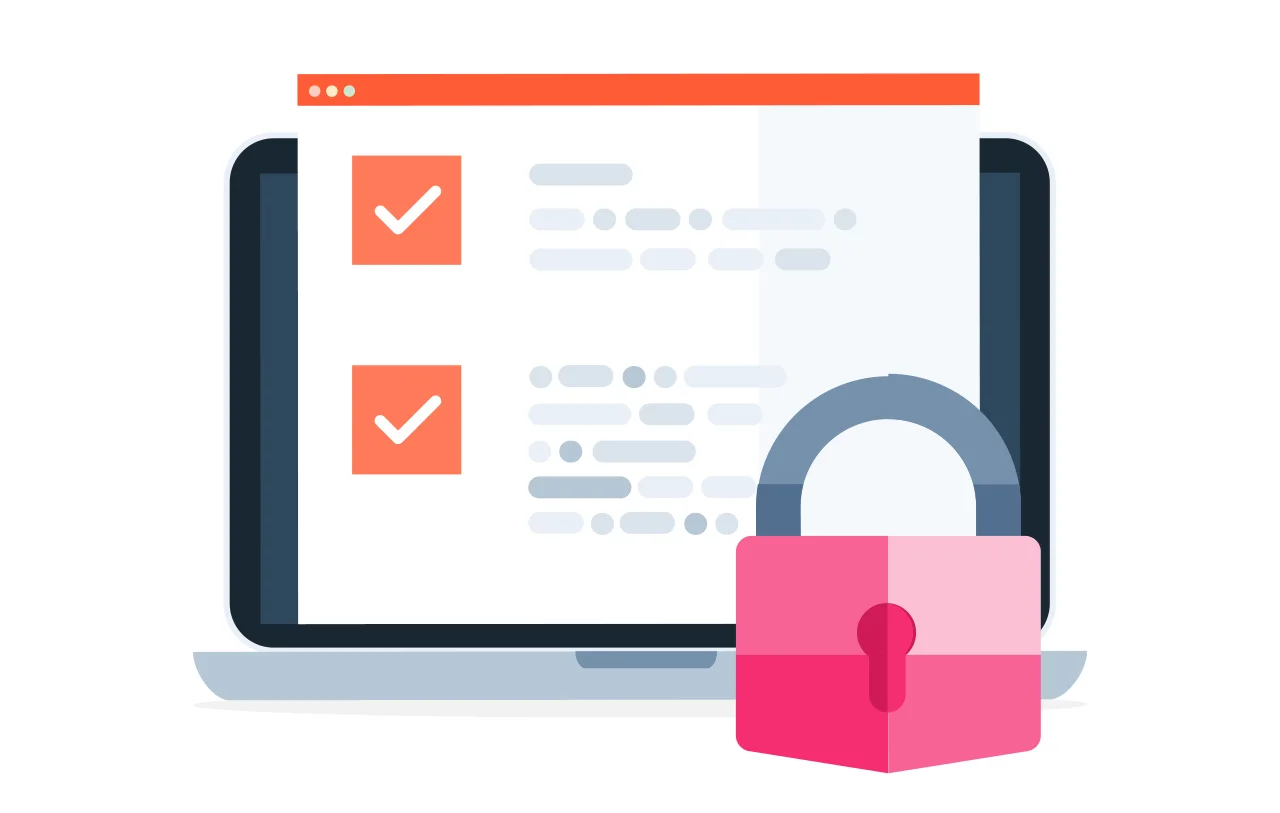Have you ever encountered a domain name that has made you think twice about a website's credibility? I have, and it's not a comforting feeling. When you register a domain, you select a welcome sign that guides visitors to your business in the digital realm. Securing a solid domain name for your website makes it effortless for users to discover your brand. Plus, your domain name can even help solidify your foothold in the digital marketplace.

Your domain name is prime digital real estate, so learning how to register a domain name is an essential step in bringing your business online. Getting your dream domain may require an investment, but the returns regarding branding, credibility, and ease of use are invaluable. Additionally, there are opportunities to snag fantastic domain names for free or at a modest cost, especially when bundled with hosting services.
I'm here to walk you through everything you need to know about selecting and registering a domain name. I'll teach you how and where to register a domain name, plus best practices for selecting one for your website. Whether you're on a shoestring budget or ready to invest, I'll teach you how to register a domain that will accentuate your brand's digital presence, not detract from it.

Custom Domain Connection with HubSpot
Inspire consumer trust and brand recognition by connecting your custom domain to your website for free.
- Connect a custom domain to your website for free.
- Keep your brand consistent across channels.
- Allow customers to find you online.
- And more!
Table of Contents
- Why register a domain name?
- How to Register a Domain Name
- How to Register for a Free Domain Name
- Free Domain Providers
- How to Buy a Website Domain
- FAQs About Website Domains
Why register a domain name?
I like to think of a domain name as my website's street address on the internet. When visitors plug an address into their browser's address bar, they get transported to your website's virtual front door. Beneath the surface, this name is a shiny facade for an IP address: A distinct sequence of numbers that pinpoint the exact location of your website's data.
In the age where your digital footprint can make or break your brand's success, having a memorable domain name isn't just an option — it's necessary. Here's why securing — and registering — that domain is so crucial.

Establish Brand Authority
As I mentioned before, visitors will raise their eyebrows if your domain name doesn't match their perception of your brand. Say I have an ice cream truck business in New York City called 'Ice Cream Dream,' and I register this domain name:
That might seem a little strange, right? What about this domain name — does this seem like what you'd expect?
If so, you just proved my point. Domain name matters in establishing brand authority.
-
Professionalism: A custom domain signals that you're serious about your business and its digital representation.
-
Trustworthiness: Customers tend to trust websites with custom domains more than those using generic or shared domains.
Boost Brand Recall
Continuing with my ice cream truck example, do you think visitors would think it's strange if I used the domain:
Even though on social media and in real life, I go by 'Ice Cream Dream?' (The answer is yes.)
-
Memorability: A well-chosen domain name sticks in the minds of your visitors, ensuring they return and recommend.
-
Consistency: Align your domain with your business name or primary service, reinforcing brand consistency across all touchpoints.
Optimize for Search Engines
I mentioned that my ice cream truck business is based in NYC; a great way to optimize for search engines would be leaning into a domain extension that's geo-specific.
Instead of www.icecreamdreamNY.com, and even better domain would be www.icecreamdream.NYC
-
SEO Boost: Search engines like Google often rank websites with custom domains higher than those without.
-
Location-specific Tailoring: Geo-specific domain extensions (.nyc, .london) can enhance local search visibility.
Customized Email Addresses
Say a customer is inquiring with my ice cream truck business about a private event. Which email address gives a sense of professionalism? Is it icecreamdreamNYC@gmail.com, or hello@icecreamdream.NYC? The first address seems a bit amateur by comparison.
-
Professional Communication: Elevate your business emails from "brandname@gmail.com" to "hello@brandname.com."
-
Trust in Transactions: Customers are likelier to trust and engage with business emails from custom domains.
Protect Your Brand
By owning my domain name, I fully control how my ice cream truck business is portrayed.
-
Avoid Brandjacking: Registering your domain, especially across various extensions (.com, .net, .org), prevents others from tarnishing your brand name.
-
Control the Narrative: Owning your domain means controlling the content, ensuring your brand's story is told how you want.
Create Tailored User Experiences
I can also create more personalized, user-specific experiences for visitors on my ice cream truck's website with a customized domain name.
-
Landing Pages: Promote campaigns using subdomains like "promo.brandname.com."
-
Segmentation: Direct various audiences to specific sections of your site, enhancing user experience and conversion.
How to Register a Domain Name
Registering your domain name is a pivotal step in cementing your online presence. Whether you're a seasoned entrepreneur or taking your first steps into the digital world, you don't have to do this alone — I'm here to help. I'll show you how to register a domain name to kickstart your website's digital transformation.

Step 1. Choose a domain name.
Have you ever seen a brick-and-mortar store with a boring sign, only to walk into the store and find it's a super cool place? This is what we're trying to avoid when we select a domain name. I urge you to view choosing a domain name as virtually the same thing — just in the digital realm. You want a domain name that resonates with your brand, invites visitors in, and is easy to remember.
For those with an established brand name, your first pick for a domain might be a straightforward YourBrand.com. However, another business may have snatched up your ideal domain. So, here are some tailored strategies to ensure your domain is still unmistakably you:
-
Suffix strategy. Enhance your domain by appending relevant descriptors. Consider adding your signature product (YourBrandShoes.com), geographical markers (YourBrandUK.com), or a universal term like YourBrandHub.com or YourBrandShop.com.
-
Prefix play. Begin your domain with an engaging verb that encapsulates your brand's action. Examples include BuyYourBrand.com, DiscoverYourBrand.com, and TasteYourBrand.com.
-
Extension exploration. Dive into domain extensions or top-level domains (TLDs). While .com is the most prevalent, there's a world of possibilities with regional TLDs like .uk, .au, or .in and specialty extensions such as .store or .app. Niche extensions might come with a slightly higher price tag, so if you're building a website on a budget, you might have to bookmark that idea.

Custom Domain Connection with HubSpot
Inspire consumer trust and brand recognition by connecting your custom domain to your website for free.
- Connect a custom domain to your website for free.
- Keep your brand consistent across channels.
- Allow customers to find you online.
- And more!
Step 2. Check for domain availability.
Think of the Domain Name System (DNS) as the internet's address book. When you type a domain into your browser, the DNS ensures you're led to the correct webpage. It's a globally accepted, decentralized directory that connects domain names to websites, making the web intuitive and user-friendly.
Checking if your desired domain is up for grabs is a breeze. Several registrars and hosting platforms offer complimentary tools (powered by WHOIS or RDAP databases) to verify domain availability. Here's a list of platforms to get you started:
-
Shopify
-
Google Domains
-
GoDaddy
-
IONOS
-
Bluehost
-
Domain.com
-
Namecheap
-
HostGator
It's important to remember that if a domain is unavailable on one platform, it's off the table across all. The silver lining? Most of these platforms provide alternate suggestions should your initial pick be taken. (Sometimes, the suggestion is even better than your initial idea.)
When your chosen domain is taken, some platforms offer broker services, acting as intermediaries to negotiate a potential purchase with the current domain holder. While this avenue might seem tempting, I would avoid going down this path unless absolutely necessary. Here's why:
-
Hidden Costs. Brokerage fees come stacked atop standard registration costs, and they're non-refundable even if the purchase doesn't go through. You can be out a lot of money — and not even score your dream domain.
-
Time Constraints. Navigating the brokerage process can be lengthy, potentially stalling your online venture's debut.
-
Premium Pricing. Securing a domain via brokering can result in a significantly steeper price than registering an available one.
Evaluate your circumstances, budget, and timeline. While brokering is a fit for some, others value iterating on their initial choice to optimize costs and time. It's never been worthwhile for me, but if you're set on a domain name, you can consider it.
Step 3. Choose a domain name registrar.
A domain name registrar is essentially the gatekeeper for domain registrations, facilitating the reservation and registration of domains. When you secure a domain name through a direct registrar or web-hosting platform, it gets officially registered in the Domain Name System (DNS).
Though a collection of accredited registrars exists, aligning with reputed providers has merits. Established registrars offer enhanced support, in-depth resources, and seamless integrations, ensuring fewer hiccups as you synchronize your domain with other platforms.
Where to register a domain may seem like a daunting question, as there are a lot of options. But this is actually a positive thing, as you can decide which platform you'd like to work with. Here are some of my favorites:
-
Website-building platforms. Platforms like Shopify, Squarespace, and WordPress simplify the process, especially if you're building your site there. Hubspot also offers an intuitive drag-and-drop website builder, making it easy to create a stunning online presence without needing coding skills.
-
Web-hosting services. Providers like HostGator and Bluehost often come bundled with other hosting-related perks.
-
Direct domain registrars. GoDaddy, NameCheap, and Google Domains specialize primarily in domain registration.
Many hosting services also double up as registrars and vice versa. You have the flexibility to register your domain in one place and choose a different provider for hosting. This is especially helpful if you decide where to register a domain name and ultimately aren't thrilled with the provider's services.
Price Tag of Domain Names
Domains aren't one-off purchases, so you'll have to 'repurchase' your domain when the time's up. You typically secure them for a recurring period, usually annually. When budgeting for a domain, it's crucial to differentiate between the introductory price and subsequent renewal costs. According to HostGator, a domain name cost ranges from free to tens of thousands of dollars, with the average .com domain usually hovering between $10 to $12 annually. However, domains deemed "premium" because of their brevity or relevance can be costly.
It's common for providers to lure customers with enticing discounts for the initial years, especially if bundled with other services. Keep an eye out for the renewal price, which is generally steeper than the introductory offer.
Additionally, the domain extension or TLD you opt for can influence pricing. For instance, a .store extension might be pricier than a .com.
Before zeroing in on a domain, consider these aspects:
-
Setup simplicity. Purchasing a domain from a website-building platform ensures easy setup, given the single-provider approach. Opting for different services can necessitate added technical steps.
-
Domain privacy needs. Registration makes your contact information accessible via the ICANN registry. Privacy protection masks this data. While platforms like Shopify offer this complimentary, others might charge a premium.
-
Domain extension preferences. Beyond the ubiquitous .com, if you have a penchant for regional or niche extensions like .ca or .store, ensure your chosen provider supports them.
-
Ancillary services. Beyond domains, consider if you need services like ecommerce hosting or email solutions. Some enticing domain deals are contingent on availing additional services.
(Psst: Don't forget that you can get free hosting and link your custom domain to your site for free when you build it with HubSpot CMS.)

Custom Domain Connection with HubSpot
Inspire consumer trust and brand recognition by connecting your custom domain to your website for free.
- Connect a custom domain to your website for free.
- Keep your brand consistent across channels.
- Allow customers to find you online.
- And more!
Step 4. Purchase and register.
After pinpointing your preferred domain registrar and the ideal domain name, it's time to initiate the purchasing process. Following your purchase, the chosen provider will facilitate the domain registration on your behalf.
As you can tell, the process of how to register a domain name depends on which platform you're using, so there's a bit of variation. I'll walk you through the steps for registering with Shopify, Google Domains, GoDaddy, IONOS, Namecheap, and Domain.com.
How to Register a Domain with Shopify
Shopify offers a streamlined process for those aiming to establish an online store. When you secure a domain directly through Shopify:
-
Access your Shopify store and navigate to Settings > Domains.
-
Click "Buy new domain" and type in your preferred domain name. A list of available extensions will pop up automatically.
-
Click "Buy"next to the desired domain.
-
If required, provide your payment details. Next, you'll view a summary where you can adjust personal data, toggle domain auto-renewal, and go through the ICANN policy and Domain Registration Agreement.
-
Complete the purchase by clicking "Buy domain."
-
You'll receive a verification email. Confirm your details by clicking on the enclosed link. After verification, it might take up to 48 hours for the domain to function correctly. Post-setup, you can customize domain settings and more via Settings > Domains in Shopify.
Registering with Google Domains
Being a product of Google, Google Domains seamlessly integrates with other Google services:
-
Visit the Google Domains registration page.
-
Input your domain, then click"Add to Cart."
-
Go to your cart and select privacy and renewal preferences.
-
Offer the associated contact information, proceed with payment details, and finalize your purchase. Your domain is now registered with Google Domains.
Registering with GoDaddy
As a pioneer in domain registration, GoDaddy offers vast integration options:
-
On GoDaddy.com, input your domain and click "Search Domain."
-
If available, select "Get it." Add more domains if desired.
-
Navigate to "Continue to Cart."
-
Browse GoDaddy's additional services and choose accordingly.
-
Review your cart's details. GoDaddy offers flexible payment terms of up to 10 years for .com domains.
-
Create or access your GoDaddy account. Provide billing and payment details, review, and confirm your purchase. Your domain is now with GoDaddy.
Registering with IONOS
IONOS, an IT industry veteran since 1988, offers domain registration coupled with hosting:
-
Visit IONOS and check domain availability.
-
Add the desired domain(s) to your cart.
-
Browse through IONOS's additional offers.
-
Create or access your IONOS account, provide payment details, review, and finalize your purchase.
Registering with Namecheap
For businesses seeking domain registration via Namecheap:
-
Visit Namecheap and search for your domain.
-
If available, add to your cart.
-
During checkout, you might encounter optional services like SSL or VPN. Opt in or out as needed.
-
Complete the billing procedures. You are now a domain owner with Namecheap.
Registering with Domain.com
For domain registration via Domain.com:
-
Head to Domain.com and search for availability.
-
Determine the domain's duration and choose privacy features.
-
Decide on connecting to additional services like Google Workspace.
-
Conclude the billing process, and you've successfully registered your domain.
While registration procedures might slightly differ across registrars, most adopt a similar structure. When deciding which platform to use, I consider cost, brand credibility, and customer support options.
Step 5. Add domain ID protection.
Registering a domain name with the Internet Corporation for Assigned Names and Numbers (ICANN) is a fundamental step toward marking your digital presence. However, during registration, you're required to provide personal contact details, which include:
-
Full Name
-
Telephone Number
-
Physical Address
-
Email Address
Immediately after successful domain registration, this contact data becomes publicly accessible. Given the potential risks of leaving personal details exposed — from being inundated with spam emails to more severe threats like identity fraud — it's imperative to consider additional security measures.
A proactive measure is opting for domain privacy offered by most domain registrars. This feature, often termed "WHOIS Privacy" or "Privacy Protection," masks your personal details, substituting them with generic information from the registrar. Doing so safeguards your personal data from unwarranted public scrutiny, reducing vulnerability to malicious actors. I wouldn't skip this step — if you do, you and your business become vulnerable to bad actors trying to steal your information.
Step 6. Renew your domain name.
I already touched on this, but it's important, so let's walk through it again.
When you secure a domain, it's not an indefinite ownership. Instead, it's like a lease, typically lasting one year. Though some registrars, such as GoDaddy, extend the duration by offering up to 10-year registration terms for certain domains like .com, no domain registration lasts forever.
To ensure continuous domain ownership, renewing it before expiration is a must. Many domain providers simplify this process through an "automatic renewal" feature. Opting for this can save you from the hassles of manual renewals.
However, always stay vigilant about your payment details. Any changes in your payment methods must be updated in your domain provider's records. This ensures uninterrupted auto-renewal.
While most domain registrars proactively notify their clients about upcoming renewals, regardless of the auto-renewal status, always keep tabs on the expiration date. Failing to renew results in the domain becoming available for others to purchase, potentially jeopardizing your online presence.
How to Register for a Free Domain Name
If you're wondering where to register a domain name for free, you're in luck. While registering a domain typically incurs a fee, there are some cost-free options available. Keep in mind, however, that these options may come with strings attached.
Free Domains from Website Builders
Platforms like Shopify, WordPress, Squarespace, Wix, and Weebly offer free domain names as part of their package. However, these domains often embed the builder's brand in the URL (e.g., icecreamdream.myshopify.com). While they serve the primary domain function, they present challenges:
-
Memorability: Such URLs can be complex and harder for users to recall.
-
Professionalism: Custom domains generally look more polished.
-
Functionality Limitation: Free domains usually lack advanced features like email forwarding or subdomain creation.
-
Non-transferability: These domains are anchored to the platform, restricting you from migrating to another service or enhancing with third-party features.
Free Domains from Hosting Providers
Some hosting providers, like Bluehost and GoDaddy, throw in a year's free domain registration when you purchase their hosting packages. If you plan on using their hosting services, why not leverage this perk? I would.
However, if you're inclined towards website builders like Shopify, paying for redundant hosting becomes cost-effective. It's also crucial to note that the "free domain" perk typically applies only for the inaugural year. Subsequent years entail standard renewal charges.
While free domain options may seem attractive, understanding their constraints helps make informed decisions. Investing in a custom domain enhances professionalism and provides flexibility and extended features.

Custom Domain Connection with HubSpot
Inspire consumer trust and brand recognition by connecting your custom domain to your website for free.
- Connect a custom domain to your website for free.
- Keep your brand consistent across channels.
- Allow customers to find you online.
- And more!
Free Domain Providers
Here is a list of domain registrars, website hosting providers, and website builders offering free domain names, typically with the purchase of another service or with no cost but with some customization limitations. In my experience, the cost of a domain is worth the money to ensure the site doesn't have any domain parameters, but if you're really trying to cut costs, these domain providers can help.
1. Wix
 Wix stands out as a renowned drag-and-drop website builder. While it lets you register a domain for free, it comes with a catch: your domain will have Wix's branding and appear as yourdomainname.wix.com.
Wix stands out as a renowned drag-and-drop website builder. While it lets you register a domain for free, it comes with a catch: your domain will have Wix's branding and appear as yourdomainname.wix.com.
What I like: Wix is a beginner-friendly option especially well-suited for those launching personal brands under the Wix subdomain. If you find affinity with Wix's offerings, you can transition to a custom domain later. However, platforms like WordPress.com might be more apt if your primary goal is regular blogging.
2. Weebly

Weebly mirrors Wix's model and provides a user-friendly website builder. Registering with them means your domain will show as yourwebsite.weebly.com. Despite the limited features, you can bypass domain name fees.
What I like: Novices experimenting with website creation for the first time will find Weebly to be a strong fit. Those eager to elevate their initial experience by shifting to platforms like CMS Hub will find Weebly worthwhile.
Small ecommerce business owners can also leverage Weebly to develop their online presence without denting their pockets.
3. Bluehost

Bluehost, a prominent web hosting service, offers a complimentary domain name for a year when you opt for their web hosting. It's an effective way to consolidate your initial online costs.
What I like: Bluehost is best for small to medium enterprises because it allows you to choose a custom domain and your preferred CMS. Whether you lean towards CMS Hub, WordPress (.org version), or Joomla, Bluehost supports it all.
4. WordPress

WordPress' free domain offering will showcase as yourdomainname.wordpress.com. Given WordPress' leading content management system status, you're assured extensive support and a broad range of plugins.
What I like: WordPress is arguably one of the most flexible options because it is versatile enough to support everyone from novice bloggers to professionals. The platform's subdomain is relatively reputable, offering a better brand presence than Wix or Weebly.
While WordPress.com might be slightly restrictive compared to WordPress.org, it remains a cost-effective choice with a commendable array of customization tools.
5. GoDaddy

GoDaddy, another hosting titan, provides free domains contingent upon purchasing their hosting plans. The platform is recognized for its competitively priced hosting packages and integral security features, like malware scanning and removal.
What I like: Small to medium businesses aiming for a holistic package — a free domain, hosting service, and an integrated website builder — will love GoDaddy. Although you can link your GoDaddy domain to other CMS platforms, the in-house website builder offers a seamless starting experience.
6. Freenom

Looking for a free domain without the frills of hosting or website-building commitments? Freenom steps up with its range of five TLDs: .tk, .ml, .ga, .cf, and .gq. However, be aware that these are country-specific domains, such as .ga for Gabon.
What I like: Businesses not concerned by location specificity and those adamant about securing a custom domain can find success with Freenom. However, the unfamiliarity of some TLDs might paint your website as less trustworthy. As a strategy, use Freenom as a short-term solution and transition to a renowned domain registrar when feasible.
How to Buy a Website Domain
If you've decided a free domain isn't for you, it's time to purchase a website domain. The good news? Doing so isn't too difficult, and generally, it is without a hiccup. That is unless you're purchasing the domain from someone who already owns it. If you're doing so, I'll give you some tips on how to make the transaction as seamless as possible.

1. Pick a brand-reflective domain name.
Your domain name should embody the essence of your brand.
-
Steer clear of dashes and numbers for clarity.
-
If your desired name is unavailable, incorporate keywords associated with your service, product, or brand ethos. Here are some of my favorite examples:
-
Brand name: Billie → Domain: mybillie.com
-
Brand name: Animal → Domain: weareanimal.co
-
Brand name: Briogeo → Domain: briogeohair.com
-
Brand name: Ella’s Boutiques → Domain: shopellasboutiques.com
-
Brand name: Billy! → Domain: lovebilly.com
-
Brand name: Listen → Domain: wearelisten.com
-
2. Set your budget and commitment period.
Determine how much you're willing to invest initially and the duration you want the domain. Registrars provide various commitment options, such as monthly, annual, biannual, or triennial. Each has distinct pricing.
3. Search for your domain on a registrar site.
Upon selecting a domain registrar, input your domain to see its availability. The registrar might suggest alternate domain names or TLDs (e.g., .net, .org) if occupied. .com remains a top pick due to its universal recognition.
4. Purchase and register the domain.
Found the perfect available domain? Great! Add to your cart, register (or sign in if you already have an account), and complete the purchase. Ensure you follow the domain registration steps accurately.
5. For taken domains, visit the domain's website.
If your domain is unavailable, visit its website. If you find a generic page without substantial content, it's possibly a 'parked domain,' meaning it's held for potential resale. Such pages often have banners leading to purchasing forms.
For example: Visiting greatstore.com might lead to a GoDaddy sales page where you can buy the domain.
6. If active, research the owner.
If the domain displays an active website, you need a different approach.
-
Analyze the website's activity. Check for recent updates or signs of stagnation.
-
Tools like the Wayback Machine can give you an overview of the site's history.
-
If owner details are visible on the site, contact them directly. If not, use ICANN's database to retrieve this information, but remember that many owners opt for privacy settings.
7. Negotiate a mutually beneficial price.
Engage with the domain owner and discuss a fair price. Factors to consider:
-
The domain's history on the Wayback Machine.
-
Domain Authority (DA) — can be assessed using tools like Moz or Ahrefs.
Always use secure payment platforms like Escrow for transactions. Avoid personal payment apps.
8. Transfer the domain.
Upon purchase, initiate the domain transfer to your chosen registrar. This process might differ based on both the sellers and your registrars.
9. Remember to renew your domain.
Timely domain renewal is the only way to ensure an uninterrupted online presence. The renewal period aligns with your subscription term. Fortunately, most registrars send reminders when your renewal date nears.
10. Link your domain to a CMS (optional).
Maximize your website's potential by connecting it to a Content Management System (CMS). Platforms like HubSpot offer tools like the Custom Domain Connection. This links your domain and lets you craft a visually appealing and functional website quickly.

Custom Domain Connection with HubSpot
Inspire consumer trust and brand recognition by connecting your custom domain to your website for free.
- Connect a custom domain to your website for free.
- Keep your brand consistent across channels.
- Allow customers to find you online.
- And more!
FAQs About Website Domains
In case you have any additional FAQs about registering a domain, I've put together some answers that may prove helpful.
What is a domain name?
A domain name is the web address visitors type into their browsers to access your website. It acts as an address by which your site is identified on the internet.
Why is choosing the right domain name important?
A domain name is crucial for branding, search engine optimization (SEO), and establishing credibility with your audience. It's the first impression many will have of your brand online.
What is a TLD?
TLD stands for Top-Level Domain. It's the last domain name segment, like .com, .org, or .net.
How can I check if my desired domain name is available?
You can use domain registrars or availability checker tools online to see if your desired name is free.
What if the domain I want is already taken?
If the domain is parked (bought for reselling), you can purchase it from the current owner. You can contact the owner to negotiate a sale or consider alternative domain names if it's actively used.
How long can I register a domain name for?
Most registrars offer registration periods from one year up to ten years. However, the common practice is registering a domain for one to three years and renewing it as needed.
What is domain privacy or WHOIS protection?
Domain privacy or WHOIS protection hides your personal information from the public WHOIS database, ensuring your details remain confidential.
Can I change my domain name after registering it?
Once a domain name is registered, you can't modify it. However, you can register a new domain and redirect your old one to the new domain.
What is the difference between a domain and hosting?
A domain is the address of your website. Hosting is where your website content (like files and images) resides. You need both for a functioning website.
How does domain renewal work?
When your domain nears its expiration, your registrar will notify you. It's crucial to renew your domain before it expires to keep your site accessible and protect it from being purchased by someone else.
Build Your Business With a Registered Domain
Acquiring a domain name is more than just a technical step — it‘s an essential phase in crafting your brand’s online identity. A memorable domain can significantly influence your brand's credibility and visibility in the digital realm. While the process might seem complicated initially, it becomes straightforward with the right strategies and guidance.
Whether you're obtaining a fresh domain or negotiating for an existing one, the ultimate goal is to have a domain that resonates with your brand and appeals to your audience. Once secured, ensure you maintain it, renewing when necessary and possibly connecting it to a CMS for seamless content management. Your domain is the doorway to your brand — make sure it makes a lasting impression.
Editor's note: This post was originally published in February 2020 and has been updated for comprehensiveness.











